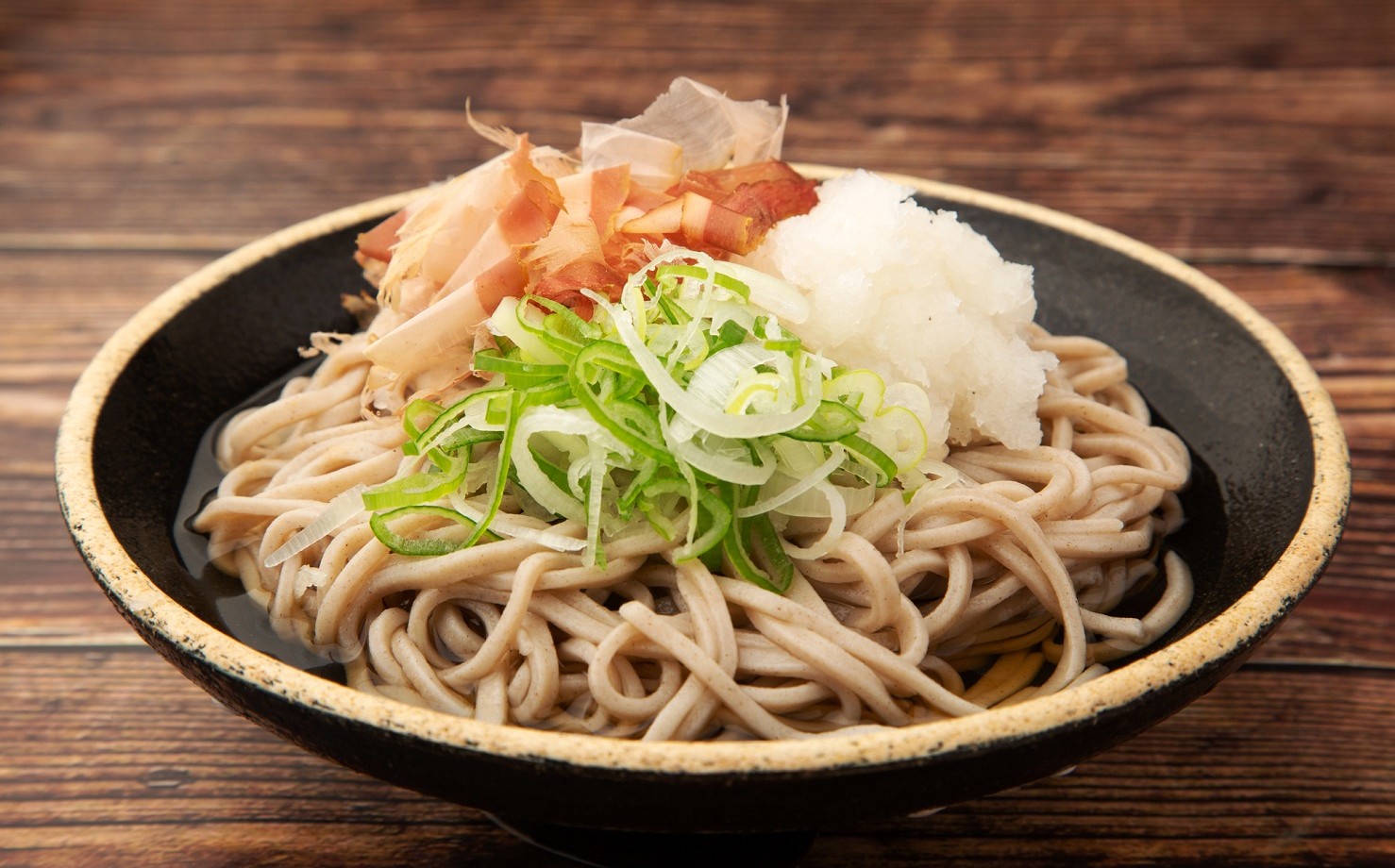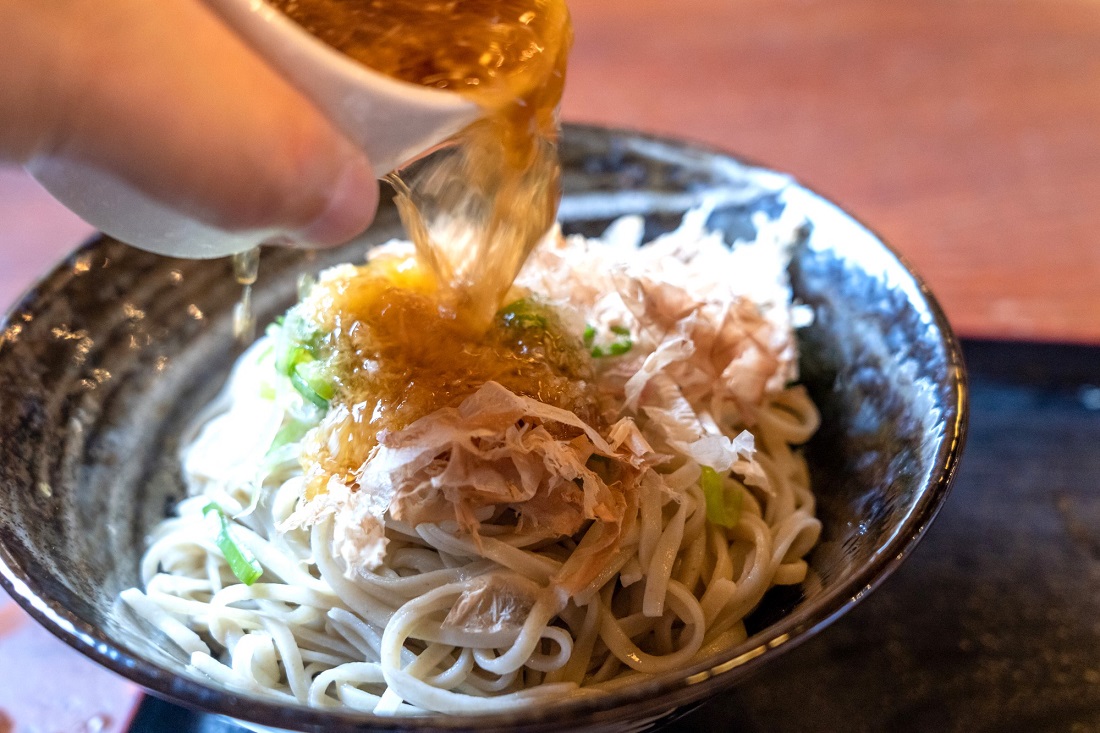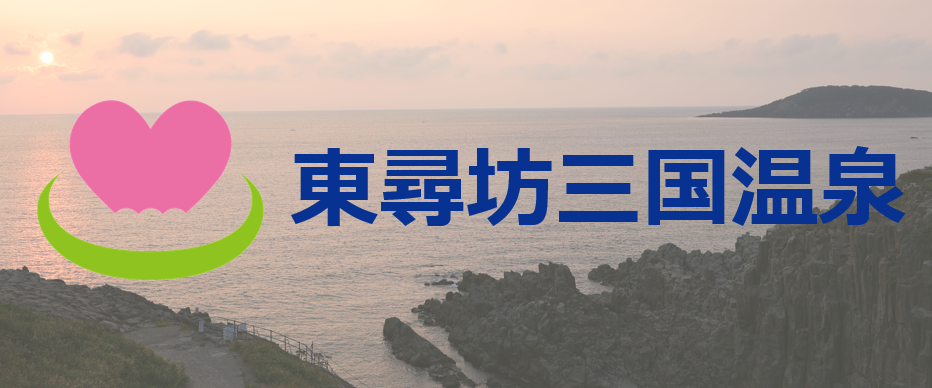Echizen Oroshi Soba
Fukui Prefecture is renowned nationwide as one of the leading producers of soba noodles. Let’s delve into the charm of Fukui’s soba!

Maruoka-Grown Soba
Characteristics of Maruoka’s Soba
With abundant natural resources and clear water essential for soba cultivation, Fukui Prefecture is one of Japan’s foremost soba-producing regions. Here, native soba varieties have flourished for centuries. The Fukui Prefectural Food Processing Research Institute currently preserves 22 strains of soba. Maruoka’s soba, made from one of the representative heritage strains of buckwheat, “Maruoka-zairai,” is famous for its delightful aroma. The grains of this variety are small in size and have thin shells, but yield noodles with a firm texture. Maruoka Town serves as the production hub for soba. Its location in the plains of Sakai City makes it ideal for extensive land utilization, leading to flourishing soba cultivation.

Teruo Nakase of the Maruoka Soba Promotion Council Shares Insights on Maruoka Soba
The Maruoka Soba Promotion Council was founded to promote Maruoka soba. Maruoka was historically recognized for its prosperous soybean cultivation. However, a severe drought struck around 1991, resulting in the failure of soybean crops. During this period, when buckwheat seeds were planted in fields invaded with weeds, the weeds vanished and the soil regained its fertility. This marked the beginning of Maruoka soba cultivation. Today, produced Maruoka soba is handed over to lovers of this particular variety, leading to its increased promotion. We also teach local high school students soba-making skills. Some of these students have even participated in the national high school soba-making competition! Did you know that most soba producers have their own personal stone mills? They love soba so much that they are constantly researching what coarseness is delicious by grinding it from the actual grain! To them, it’s essential to experiment with various methods and be able to describe the flavors and tastes in detail. Each store determines its own ratio of grains and creates its original Maruoka soba. So, even though it’s all Maruoka soba, the taste varies from store to store!

Mr. Nakase’s Recommendation! Delicious Ways to Enjoy Maruoka Soba
Maruoka soba is best enjoyed by pairing it with grated daikon radish! Utilizing grated daikon radish aids digestion, allowing you to relish up to three bowls without fatigue!
Some fans also enjoy adding freshly squeezed grated daikon radish to the broth, imparting just the right spiciness. Sometimes, “Kazafu karami daikon” is added to give the dish a scent reminiscent of wasabi.
Maruoka soba is harvested early when the blackening rate (the percentage of mature grains with blackened skins) is between 50% and 60%. This highlights the aroma of freshly harvested soba, enabling you to savor its distinctive deliciousness.
Teruo Nakase
Vice Chairman of Maruoka Soba Promotion Council

What Is Echizen Oroshi Soba?
The Famous Echizen Oroshi Soba from Fukui Prefecture, the Soba Paradise
Echizen Oroshi Soba is a local delicacy from Fukui Prefecture that is beloved not only in Sakai City, but also all across the prefecture. Echizen Oroshi Soba typically features cold soba noodles topped with a soy sauce-flavored broth, grated daikon radish, shaved bonito flakes, and chopped green onions. The noodles have a satisfyingly firm texture. One distinctive characteristic is the use of spicy daikon radish for the grated daikon, which adds a lovely hint of spiciness. The name “Echizen Oroshi Soba” gained national recognition when Emperor Showa (1901–1989) visited Fukui Prefecture. He tasted Echizen Oroshi Soba during his visit and praised its flavor, remarking, “The soba from Echizen was truly delicious.” This praise significantly contributed to the dish’s popularity spreading across the country.

The Production of Echizen Oroshi Soba
The Secret to Deliciousness Lies in the Milling Techniques!
Echizen Oroshi Soba is made using small, fully packed buckwheat grains. These grains are stored in warehouses under meticulous temperature and humidity control to preserve their quality. There’s a particular emphasis on the manufacturing method of the noodle flour: traditional stone mills are typically employed in order to preserve the buckwheat’s natural flavor and sweetness. The slow grinding of the buckwheat grains with these mills results in fragrant soba flour. Once the soba flour is ready, it is used to make soba dough, which is then cut with a knife at approximately 2-millimeter intervals. This makes Echizen Oroshi Soba a relatively thicker noodle compared to other soba varieties. These thicker noodles let you perceive the increasingly rich taste of soba with each bite.

















